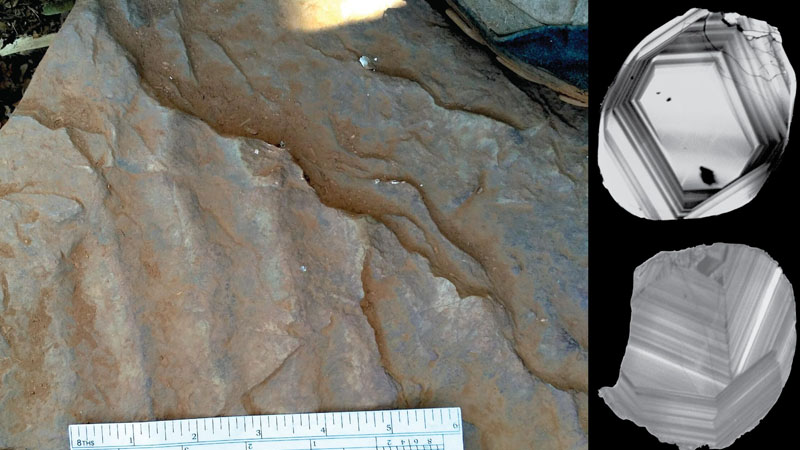When we look at the Moon, we see a snapshot of it as it is now, and has been for a long time. The Moon is geologically dead for the most part. It isn’t subjected to the same levels of erosion and tectonic activity as humans are, allowing us to look back into its history with relative ease.
In comparison, the Earth’s surface materials are constantly cycling. Features that once existed on the surface of our planet have largely gone, and the geological record has been wiped clean. As a result, if scientists wish to see into the Earth’s deep past, they have to get creative.
Milo Barham and colleagues from Curtin University’s Timescales of Mineral Systems Group and the School of Earth and Planetary Sciences developed a method for dating individual grains of sand and tracing them back to their source materials. Their results were published in Earth and Planetary Science Letters.
“If we want to go back in time and understand what setting a deposit was in, we can look at the age population and see if it’s all young grains or is it a range of different ages? That helps tell us how the different plates were shuffling and grinding in the past,” Barham told SYFY WIRE.
To get a glimpse into the past, the team went to beaches to collect sediments and check for zircons, a type of mineral. Zircons are ideal for deep time aging because they contain both uranium and thorium, which are both radioactive. Scientists can age minerals to determine when they were generated since they know the decay rates of both elements. Furthermore, because zircons contain both elements with differing decay rates, two dating methodologies can be used to validate the data.
The zircons must be separated from the larger sediment population before they can be dated, which can be difficult considering the pure number of grains present in even a handful of sand.
“We use density differently. We put the sediments in this really heavy liquid which has a density of 2.7 grams per cubic centimeter. All the heavy grains sink down and all the light grains like quartz float to the top,” Barham said.
Once they’ve separated the zircons from the sediment population, they place them on a piece of double-sided sticky tape, cover them with resin, and polish them. They can be imaged and locations of interest identified in this state.
The aging procedure entails hitting the minerals with a laser that vaporizes the grains, sending the chemical information into an instrument that provides a date.
As per BBC, scientists focused on sediment samples gathered from beaches because they are representative of the larger geologic story.
“If you went to a little stream in the mountains and analyzed the zircons there, it’s very likely it’s going to come from the local bedrock. If you go further downstream, it has more chance to get other sources, and by the time you get to the beach it’s had time to mix,” Barham said.
A growing database of rock samples from throughout the world provides scientists with a reference against which their individual grains can be compared. If scientists can match the age of a single zircon to that of a bedrock somewhere else in the globe, they may be fairly certain that’s where it came from. However, they sometimes discover something that does not correspond to anything that still exists on the planet’s surface.
“A good example is the oldest piece of Earth that we know of, a grain of zircon in Western Australia,” Barham said. “The rock it came from has been destroyed but we have this grain that’s 4.4 billion years old, representing some of the earliest activity of anything happening on Earth.”
Even when the world’s surface crumbles away over geologic timescales, pieces of its deep past are preserved within comparatively newer rocks or in the sands gathering at the world’s beaches. Take a moment the next time you build a sandcastle to revel in the fact that the components of your temporary construction might have existed for billions of years.

